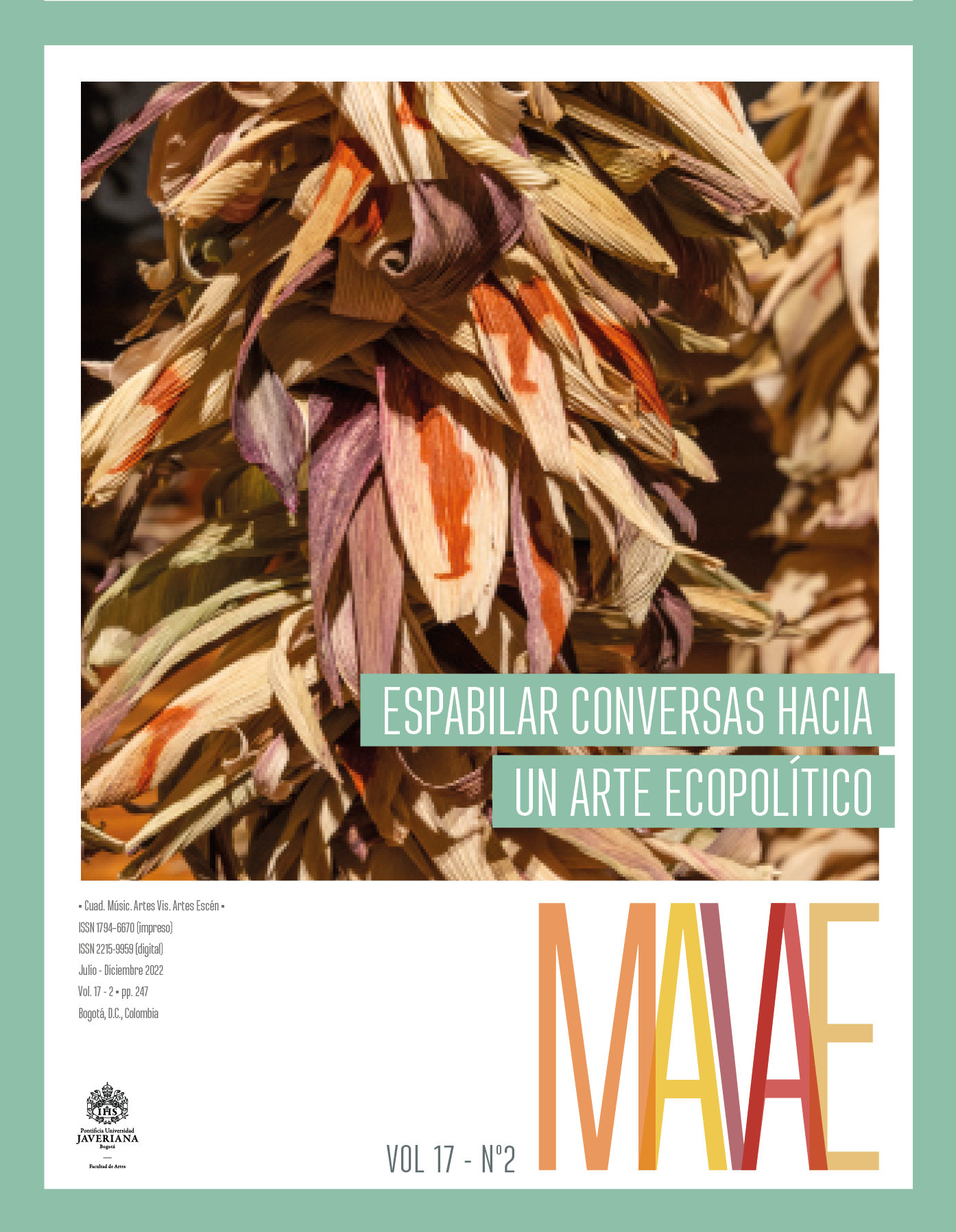Resumo
O objetivo deste artigo é analisar o vínculo afetivo humano-animal no documentário My Octopus Teacher, para compreender o processo de transformação subjetiva do humano na multiespécie e na etnografia sensorial. Também propõe uma reinterpretação estético-emocional e expressiva dessas emoções pelos autores, para tornar visível o potencial do cinema como lugar de envolvimento afetivo. A abordagem metodológica consistiu na categorização das cenas segundo indicadores específicos das emoções desencadeadas. Encontramos que o vínculo afetivo mostrado pelo documentário pode ser caracterizado como a quebra de hábitos e o surgimento do medo, o assombro, o amor, a compaixão e a tristeza. Concluímos que o medo pode ser transformado pela abertura ao espanto, o qual leva ao desenvolvimento de emoções inclusivas. Nossa contribuição consiste em uma descrição detalhada das emoções específicas que ocorrem no encontro e na reflexão sobre elas, usando categorias enquadradas na antropologia cultural, o qual nos permite mostrar a agência específica da alteridade cefalópode e suas possibilidades de relacionamento com os seres humanos. Isto aponta para um caminho possível para a inclusão de alteridades radicais.
Beltrán Guerra, Jaime Alfonso. 2011. “Estado del arte sobre el sistema nervioso del pulpo desde la perspectiva de la morfología humana”.
Tesis de maestría. Universidad Nacional de Colombia. https://repositorio.unal.edu.co/handle/unal/9558.
Birke, Linda y Luciana Parisi. 1999. “Animals, Becoming”. En Animal Others: On Ethics, Ontology, and Animal Life, 55-73. Nueva York: State
University of New York Press.
Burt, Jonathan. 2002. Animals in Film. Londres: Reaktion Books.
Corbin, Juliet y Anselm Strauss. 2008. Basics of Qualitative Research.Techniques and Procedures for Developing Grounded Theory.
Thousand Oaks: Sage.
Despret, Vinciane. 2021. De agentes secretos a la interagencia. En Simbiología: Prácticas artísticas en un planeta en emergencia, 1-27. Buenos Aires: Centro Cultural Kirchner. https://cck.gob.ar/deagentes-secretos-a-la-interagencia-por-vinciane-despret/12135/
Ehrlich, Pippa y James Reed. Mi maestro el pulpo. 2020; Sudáfrica: Netflix,
Documental.
Geertz, Clifford. 1973. The Interpretation of Cultures. Nueva York: Basic Books.
Giraldo, Omar Felipe e Ingrid Toro. 2020. Afectividad ambiental. México: Universidad Veracruzana.
Godfrey-Smith, Peter. 2016. Other Minds. The Octopus, the Sea, and the Deep Origins of Consciousness. Nueva York: Farrar, Strauss & Giroux.
Haraway, Donna. 2008. When Species Meet. Minneapolis: The University of Minnesota Press.
Haraway, Donna 2016. Staying with the Trouble. Durham: Duke University Press.
Hochner, Binyamin. 2004. “Octopus Nervous System”. http://www.octopus.huji.ac.il/site/articles/Hochner-2004.pdf.
Johnson, Mark. 1993. Moral Imagination: Implications of Cognitive Science for Ethics. Chicago: The University of Chicago Press.
Kirksey, S. Eben. 2014. The Multispecies Salon. Durham: Duke University Press.
Kirksey, S. Eben y Stefan Helmeich. 2010. “The Emergence of Multispecies Ethnography”. Cultural Anthropology 25, n.º 4: 545-576. https://doi. org/10.1111/j.1548-1360.2010.01069.x.
Lapworth, Andrew. 2015. “Habit, Art, and the Plasticity of the Subject: The Ontogenetic Shock of the Bioart Encounter”. Cultural Geographies 22, n.º 1: 85-102. https://doi.org/10.1177/1474474013491926.
Le Breton, David. 2004. Les passions ordinaires: Anthropologie des émotions. París: Éditions Payot & Rivages.
Macdonald, Scott. 2013. “The Ecocinema Experience”. En Ecocinema Theory and Practice, editado por Stephen Rust, Salma Monani y Sean Cubitt, 17-42. Nueva York: Routledge.
Nussbaum, Martha C. 2006. El ocultamiento de lo humano. Traducido por Gabriel Zadunaisky. Buenos Aires: Katz.
Nussbaum, Martha C. 2008. Paisajes del pensamiento. Traducido por Araceli Maira. Barcelona: Paidós.
Nussbaum, Martha C. 2014. Emociones políticas. Traducido por Albino Santos Mosquera. Barcelona: Paidós.
Odum, Eugene Pleasants. 2006. Fundamentos de ecología. Traducido por Carlos Gerhard Ottenwaelder. México: Cengage Learning.
Pink, Sarah. 2015. Doing Sensory Ethnography. Thousand Oaks: Sage.
Podalsky, Laura. 2011. The Politics of Affect and Emotion in Contemporary Latin American Cinema. Nueva York: Palgrave Macmillan.
Prinz, Jesse J. 2007. The Emotional Construction of Morals. Oxford: Oxford University Press.
Sherman, Gary D. y Jonathan Haidt. 2011. Cuteness and Disgust: “The Humanizing and Dehumanizing Effects of Emotion”. Emotion Review 3, n.º 3: 245-251. https://doi.org/10.1177/1754073911402396.
Smaill, Belinda. 2016. Regarding Life: Animals and the Documentary Moving Image. Albany: State University of New York Press.
Starosielski, Nicole. 2012. “Beyond Fluidity: A Cultural History of Cinema Under Water”. En Ecocinema Theory and Practice, editado por Stephen Rust, Salma Monani y Sean Cubitt, 149-168.Nueva York: Routledge.
Thys, Tierney M. 2020. “Exploring Eight-Armed Intelligence Through Film”. Animal Sentience 26, n.º 27. https://doi.org/10.51291/2377-
1658.
Vasalou, Sophia. 2015. Wonder: A Grammar. Nueva York: Suny Press.
Zylinska, Joanna. 2009. Bioethics in the Age of New Media. Cambridge: Massachusetts Institute of Technology.

Este trabalho está licenciado sob uma licença Creative Commons Attribution 4.0 International License.


